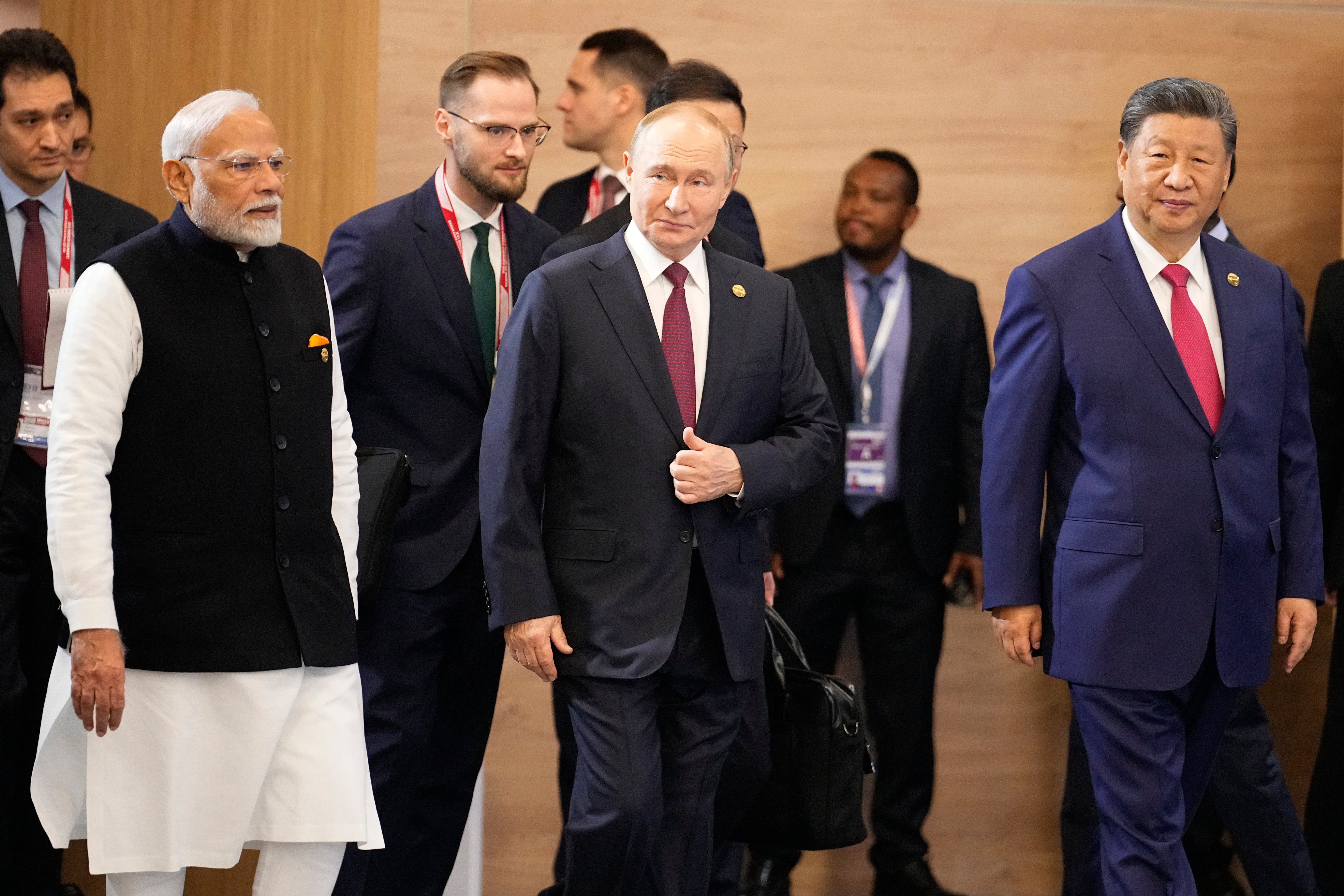Indian prime minister Narendra Modi vowed to improve bilateral ties as he sat down with Chinese president Xi Jinping on the sidelines of a regional summit in Tianjin on Sunday.
Relations between the Asian neighbours reached a historic low after their forces clashed along the disputed Himalayan border nearly five years ago.
Although they have lately been making efforts to mend their ties, US president Donald Trump’s decision to hit both countries with heavy import tariffs appears to have spurred the need for a swifter rapprochement.
While Beijing is still in talks with Washington for a trade agreement, New Delhi has hit pause on such negotiations. Instead, the Modi government is seeking to expand trade and investment relations with Beijing and other fellow members of the Brics bloc as it looks to move away from Washington.
Mr Trump’s 50 per cent tariff on India – a 25 per cent import levy to go with a 25 per cent “penalty” for continuing to purchase Russian crude oil – threatens to torpedo the world’s third largest economy, for which the US is the biggest export market.
Beijing opposed the crippling US tariff imposed on India and it would “firmly stand with India”, Chinese ambassador to India Xu Feihong said this month.
In keeping with the messaging of the Shanghai Cooperation Organisation summit – to present a united front against Western pressure – Mr Modi said during his meeting with Mr Xi that India and China had pursued strategic autonomy and their ties should not be seen through the lens of a third country, the Indian foreign ministry said in a readout of the meeting.
The Chinese president reiterated Mr Modi’s concern and said the two neighbours must “not let the border issue define the overall China-India relationship,” Xinhua news agency reported.

The leaders emphasised the need to proceed from a “political and strategic direction” to expand trade and investment ties, and bring down India’s trade deficit with China.
“We’re committed to progressing our relations based on mutual respect, trust, and sensitivities,” Mr Modi told the Chinese leader during the meeting.
Mr Modi’s first visit to China in seven years is expected to help revive and improve relations which were almost frozen following the deadly border clashes in Ladakh’s Galwan Valley. The clashes left at least 20 Indian and four Chinese soldiers dead and triggered a military standoff between the nuclear neighbours.
A thaw came last year when they reached a border petrol agreement at a meeting hosted by Russia. The pact gradually improved ties and restored key areas of the bilateral relationship.
India and China share a rather poorly demarcated 3,488km border that runs from Ladakh in the west to Arunachal Pradesh in the east.
China also holds a big chunk of territory in Ladakh called the Aksai Chin that it won during the 1962 war with India and claims Arunachal as part of the province of Tibet.
Mr Modi seemed to extend an olive branch at his meeting with Mr Xi saying an atmosphere of “peace and stability” had been created along the disputed Himalayan border.
An agreement had been reached regarding border management, he added without giving any details.
Mr Modi announced that direct flights, suspended since 2020, were being resumed but did not offer a timeframe.
Mr Xi said he hoped the Tianjin meeting would “further elevate” and “promote the sustained, healthy and stable development of bilateral relations”, according to state broadcaster CCTV.
Ties could be “stable and far-reaching” if the two countries viewed each other as partners instead of rivals, the president added.
